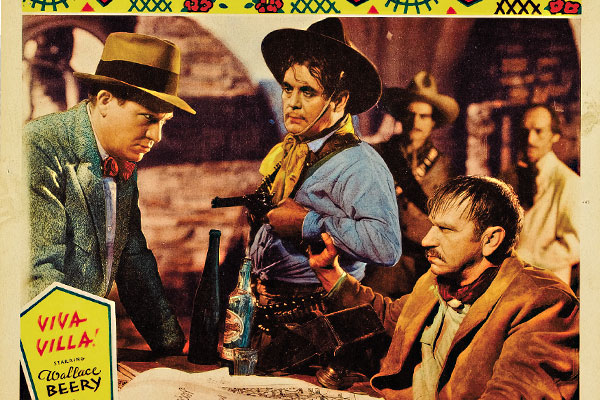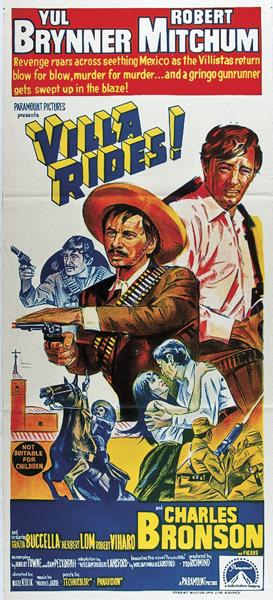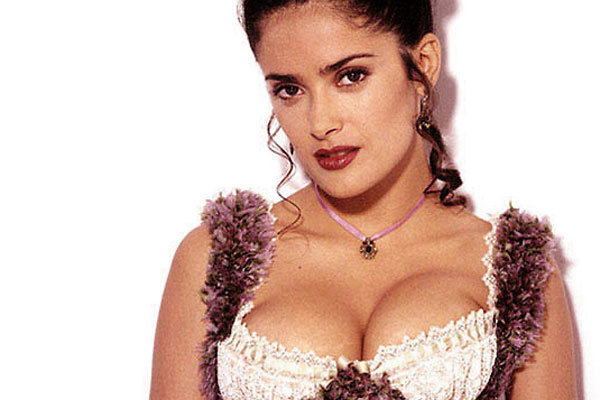 Pancho Villa was admired by some of the finest writers of the 20th century, and a surprising number wrote screenplays about him: Ben Hecht, who, with Charles MacArthur, redefined our opinion of the press with 1931’s The Front Page; Robert Towne, whose Chinatown screenplay is arguably the most important work of literature of the 1970s; Sam Peckinpah who, from The Rifleman series to 1969’s The Wild Bunch, brought a combination of reality and poetry
Pancho Villa was admired by some of the finest writers of the 20th century, and a surprising number wrote screenplays about him: Ben Hecht, who, with Charles MacArthur, redefined our opinion of the press with 1931’s The Front Page; Robert Towne, whose Chinatown screenplay is arguably the most important work of literature of the 1970s; Sam Peckinpah who, from The Rifleman series to 1969’s The Wild Bunch, brought a combination of reality and poetry
to the West in particular and to manhood in general. Their views of the Mexican Revolution general offered cinemagoers wildly differing results.
Certain elements in Villa’s life so appealed to filmmakers that they are found in virtually all Villa films. The writers relished his illiteracy. They ate up the fact that he married women at the drop of a sombrero—unofficially, more than two dozens. They appreciated that the seemingly 1870s-style story was really 20th century, replete with cars and planes.
They especially delighted in his American supporters. In 1934’s Viva Villa! Villa’s American ally is a reporter played by Stuart Erwin. In 1968’s Villa Rides, he’s Robert Mitchum’s gun-smuggling pilot. In 1972’s Pancho Villa, he’s Clint Walker’s gunrunner.
Most of all, they loved that Villa had an instinct for using the press…and Hollywood. The heart of 2003’s And Starring Pancho Villa as Himself is Villa’s involvement with the film industry. But even back in 1972, Telly Savalas’s Villa took time out from a battle to watch a newsreel of his own exploits.
Although the other films have considerable merit, the only undeniable classic is Viva Villa! re-released this May by Warner Home Video. Wallace Beery gives one of the finest performances of his career, reprising a role he played in 1917—when Villa was still alive and powerful—in the lost New Jersey-filmed Pathé serial Patria.
Hecht’s script-—written in two weeks—is brilliant, taking Villa from his childhood to his death, painting him convincingly as both brutal thug and patriotic idealist, undone by his own innocence. James Wong Howe’s breathtaking black-and-white cinematography of Mexico makes one wonder why anyone would make a movie in color.
The supporting cast is exceptional. Leo Carrillo is hilarious and chilling as Villa’s friend, whose impatient, “Hurry up; it take too long,” became a signal that someone was about to die. Carrillo graduated to the lead for 1950’s Pancho Villa Returns.
Five years before David O. Selznick produced Gone with the Wind, he learned some hard lessons with Viva Villa! To shoot in Mexico, MGM agreed to give script approval to a Mexican government full of Villa’s enemies and final cut approval to Villa’s widow. Accommodations were so primitive that cast and crew were living aboard a train—except sometimes star Beery, who often flew himself to El Paso, Texas, to sleep.
After two months of shooting, Director Howard Hawks felt the film was in the can. Then a plane carrying three weeks of his footage crashed and burned.
As if that was not bad enough, second male lead Lee Tracy, playing a cynical journalist who befriends Villa, woke up hungover and, annoyed by noise outside his hotel, staggered, naked, out on the balcony, and urinated into the street, onto a military parade, dousing the cadets of Mexico’s equivalent of West Point. MGM had to rush Tracy out of Mexico. To make amends, the studio not only apologized to the government, but also fired Tracy, canceling his long-term contract, and cut every frame of him from the movie.
Back in Hollywood, California—between redoing all of Tracy’s scenes with Erwin and the lost footage—two thirds of the movie had to be reshot. Not by Hawks—Selznick claimed he fired him, and Hawks claimed he quit—but by Jack Conway. Regardless of all the fiascos, the movie turned out wonderful.
Hecht’s effort was followed up by Peckinpah and Towne’s. In 1968’s Villa Rides, the sophisticated Yul Brynner couldn’t be any more unlike Beery’s lovable bandit slob, and that was the problem: he wasn’t willing to play Villa as a thug touched with greatness. Brynner complained Peckinpah had created a villain, not a hero. Paramount fired Peckinpah and brought in Towne to fix the mess. But all the action couldn’t hide the half-hearted telling.
Mitchum, as a gun-running pilot, is more fun than Brynner, and he gets more screen time. The film’s greatest strength is its humor: Charles Bronson played Maj. Gen. Rodolfo Fierro, Carrillo’s character from Viva Villa! The Brynner and Bronson teaming compares well with Beery and Carrillo. The biggest single mistake was casting Herbert Lom as Villa’s nemesis, Gen. Victoriano Huerta. While Beery and his Teutonic-seeming enemy contrasted hugely, Brynner and Lom were so jarringly alike in looks, manner and voice, that only Lom’s hair would let you tell them apart—and bald-headed Brynner wore a wig!
With Savalas playing Villa and a supporting cast that included Clint Walker, Anne Francis and Chuck Connors, the 1972 Euro-Western Pancho Villa should have been a winner. But director and story writer Eugenio Martín never decided whether to make an action picture or a farce, and he ended up with both. Savalas’s performance is more than unsympathetic; it’s clownish. In one scene, Villa thinks he’s dying before he realizes that his clothes are actually full of lizards, because he doesn’t change his underwear enough.
The most recent of the Villa feature films is HBO’s delightful 2003 movie And Starring Pancho Villa as Himself. Antonio Banderas stars as the savvy bandit using the American film industry to promote and finance his revolution. This is the first film on Villa since 1934 that’s worth watching twice.
Henry C. Parke is a screenwriter based in Los Angeles, California, who blogs about Western movies, TV, radio and print news HenrysWesternRoundup.Blogspot.com Henry’s grandfather, for whom he is named, fought with Gen. John “Black Jack” Pershing against Pancho Villa.
Photo Gallery
– By Rico Torres, HBO –
– Courtesy Heritage Auctions, NOVEMBER 8, 2012; Paramount –








